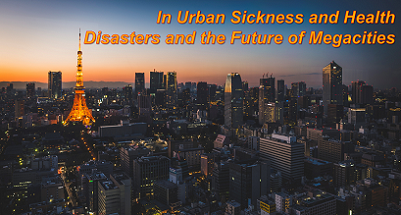[Editor’s Note: Regular readers of the Mad Scientist Laboratory know that human migration into ever growing urban centers is one of the key trends we track regarding the Operational Environment. Half of the world’s population migrated to urban areas in the last 10 to 15 years and estimates project 60 percent of the planet’s population will be living in urban areas within the next decade and a half. Over half of the politically significant urban areas lie within 100 kilometers of a coast, a situation of notable consequence given the coincidence of coastal areas’ vulnerability to powerful storms, the likelihood of being in an earthquake zone (many are located along the Pacific rim), and projected estimates of sea level rise during this century.
Per LTG Theodore Martin (USA-Ret.), former DCG/CoS, TRADOC, in his Foreword to TRADOC Pamphlet 525-92-1, The Changing Character of Warfare: The Urban Operational Environment, dated April 2020:
“The U.S. Army faces numerous challenges in our current and near-term future operational environments. None will be more difficult than conducting operations in the world’s urban areas. We need only cast our eyes over recent historical events to see that those operations will span 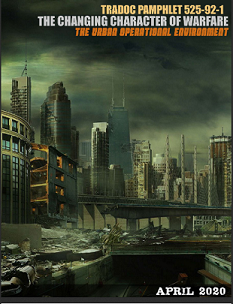 the scope of possible contingencies: large scale combat operations (Baghdad and Mosul, for example), counterinsurgency (Kabul, Kandahar, and Iraq’s cities once again), counterterrorism (9/11, London, Paris, and Mumbai), humanitarian assistance/ disaster relief (Great East Asian Earthquake and the Fukushima-Daiichi nuclear reactor failure), and others. In short, our Soldiers will confront both nature’s raw power and enemies’ use of increasingly sophisticated technologies and tactics that will at times constrain employment of our own capabilities to maximum effect. Employment of innovative concepts applicable to both competition and armed conflict contingencies such as those inherent in Multi-Domain Operations will underlie our preparations, operations, and ultimate successes.”
the scope of possible contingencies: large scale combat operations (Baghdad and Mosul, for example), counterinsurgency (Kabul, Kandahar, and Iraq’s cities once again), counterterrorism (9/11, London, Paris, and Mumbai), humanitarian assistance/ disaster relief (Great East Asian Earthquake and the Fukushima-Daiichi nuclear reactor failure), and others. In short, our Soldiers will confront both nature’s raw power and enemies’ use of increasingly sophisticated technologies and tactics that will at times constrain employment of our own capabilities to maximum effect. Employment of innovative concepts applicable to both competition and armed conflict contingencies such as those inherent in Multi-Domain Operations will underlie our preparations, operations, and ultimate successes.”
In today’s post, we welcome returning guest blogger Dr. Russell Glenn with an excerpt from his informative paper Understanding and Mitigating Disasters in World Megacities (a link to which may be found following this post). Dr. Glenn explores dense urban populations’ vulnerabilities to natural disasters, the challenges facing megacity authorities in responding to these disasters, and how California’s Bay Area, New York City, and Tokyo offer examples of innovative cooperatives, inter-organizational ties, and citizen-neighbor resiliency to help prepare for the inevitable. However, most megacities — especially those in the Global South — lack the requisite resources and national infrastructure to adequately prepare to respond to the scope and scale of these humanitarian disasters. Only our Joint Force, in conjunction with our Allies and Partners, has the manpower, reach, lift, and readiness to provide assistance in such times of need — read on!]
The 21st century may or may not prove to be the Asian Century. It already is and will continue to be the Urban Century. Over half of the Earth’s population resides in urban areas; some 4.3 billion people call them home. Analysts estimate that number will rise to 6.4 billion by 2050 — 70 percent of the planet’s men, women, and children. Ninety-five percent of this increase will be in the developing world.1

It is the largest of urban areas that are proving to be the world’s most influential. Those known as megacities — commonly defined as urban areas with populations of ten million or more — number forty-four today.2 Less than half that number (16) had populations of over even one million in 1900. Unfortunately, the locations of most megacities put them at risk of catastrophic disaster. Better preparation to deal with these risks tends to accompany wealth. Tokyo and New York are exceptional not only in being among the richest of the planet’s urban areas. They are also among the best prepared for future disasters. Too few of the remaining forty-two are as fortunate. The potential for human suffering and infrastructure devastation is magnified when the megacity is in the developing world. It is there that tens of millions live in particularly vulnerable locations: low-lying land susceptible to inundation, hillside slums predisposed to landslides, or structures built with no thought given to earthquakes’ shaking. Dhaka, Bangladesh; Jakarta, Indonesia; Lagos, Nigeria; and Mumbai, India are among those that suffer frequent flooding. Earthquakes are irregular visitors to Los Angeles, Osaka-Kobe-Kyoto, and also to Tehran, and Mexico City (a city also with proximity to an active, 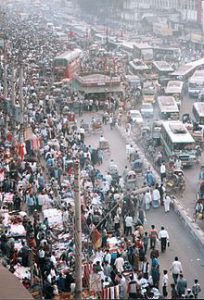 not-too-distant volcano, as is the world’s largest megacity, Tokyo, another of those earthquake prone). Mother Nature cannot be blamed for all these urban areas’ calamities, however. Mumbai suffered a tragic terrorist attack in 2008. So did Paris in 2015, Tokyo in 1995, Moscow in 2002, and — of course — New York in 2001. Lagos had a close brush with tragedy during Ebola’s 2014 outbreak when a sickened airline passenger collapsed on arrival at its international airport. In addition, mankind’s pre-event neglect and mismanagement frequently magnifies damage when nature’s wrath visits. Somewhat countering these misfortunes: what we can learn from one megacity catastrophe lends much to our understanding of similar crises in others. So too, lessons from these largest of cities’ crises also informs smaller urban areas’ misfortunes. The reverse is also true. Many are the lessons that less populous cities offer when readying for and reacting when adverse events strike those with the largest populations.
not-too-distant volcano, as is the world’s largest megacity, Tokyo, another of those earthquake prone). Mother Nature cannot be blamed for all these urban areas’ calamities, however. Mumbai suffered a tragic terrorist attack in 2008. So did Paris in 2015, Tokyo in 1995, Moscow in 2002, and — of course — New York in 2001. Lagos had a close brush with tragedy during Ebola’s 2014 outbreak when a sickened airline passenger collapsed on arrival at its international airport. In addition, mankind’s pre-event neglect and mismanagement frequently magnifies damage when nature’s wrath visits. Somewhat countering these misfortunes: what we can learn from one megacity catastrophe lends much to our understanding of similar crises in others. So too, lessons from these largest of cities’ crises also informs smaller urban areas’ misfortunes. The reverse is also true. Many are the lessons that less populous cities offer when readying for and reacting when adverse events strike those with the largest populations.
The Exceptionalism of Megacities…and their Disasters
Many of these urban areas dominate their countries economically, politically, and socially. The Republic of Congo’s Kinshasa houses only 13 percent of the country’s population but generates 85 percent of its income.3 Karachi generates some 25 percent of Pakistan’s gross domestic product, is the source of 65 percent of national tax revenue, and handles 95 percent of the country’s international trade.4 Manila is fifteen times larger than the Philippines’ second most populous urban area and similarly influential. Paris has unquestioned primacy in France as does Lagos in Nigeria, Cairo in Egypt, Moscow in Russia, and Tokyo in Japan (the last despite Japan having two cities with populations exceeding ten million and another with over nine million). Nineteen of the forty-four megacities are national capitals (or, in two of that nineteen, are part of an urban area that includes them).5
History, geography, and common sense suggest these vital urban areas will be sites of among the world’s greatest disasters to come. They are concentrations where millions — in some cases multiple tens of millions — live, work, visit, or traverse as transportation hubs. This combination of huge numbers in high density environments prone to natural calamities exacerbated by human misjudgment or malfeasance makes it obvious that preparing for, practicing responses to, and preparing resources for recovery from megacity disasters is essential.
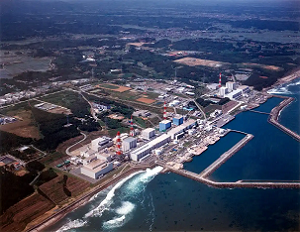
Mankind will measure these disasters in terms of human suffering and economic impact. The latter will include local, national, regional, and often global repercussions. Tokyo provides a prime example. As the largest urban economy on the planet, the megacity would rank as the world’s seventeenth largest national economy at just a fraction less than South Korea’s and almost twice that of Australia.6 The city budget exceeds Sweden’s. It hosts more foreign companies than any other urban area and is responsible for over a third of its country’s national gross domestic product. After radiation from Fukushima-Daiichi’s failed nuclear power plant gave Tokyo and its 37 million people a near miss in March 2011, Prime Minister Naoto Kan observed, “the future existence of Japan as a whole was at stake.” The city — and country by extension — survived “by a wafer-thin margin.”7 The prime minister was being conservative. A crippling of Japan’s capital would have ravaged both his country and other nations’ economies, just as had the tsunami that triggered the reactors’ failure ransacked northeastern Honshu.
The relatively recent emergence of megacities as a global phenomenon means that governments have no deep history on which to draw when it comes to these urban areas and disasters. Despite their aforementioned exceptionalism in population size, national and frequently broader economic influence, and social impact (think Mumbai’s Bollywood or Paris’s cultural sway) — it is often to smaller urban areas that megacities must therefore turn when seeking lessons for better disaster preparedness. These largest of urban areas can also look back at their own pre-megacity years to draw on relevant insights from their own histories. Tokyo’s so-called 3/11 Fukushima-bred crisis was by no means its first brush with catastrophe. Much of its readiness today has roots in a far greater catastrophe nearly a century ago, that being the 1923 combination of earthquake and fire that killed some 140,000.
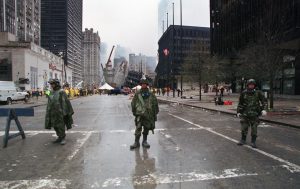
New York City was victimized by Hurricane Sandy and particularly hard hit by COVID-19 in the opening months of 2020, these in addition to suffering the 9/11 attacks. COVID’s ravages precipitated extraordinary actions: public properties converted into temporary hospitals, freezer vans parked outside medical facilities to store the deceased before burial or cremation, and restrictions on movement that gave city streets a post-apocalyptic aura. By far the hardest hit location in the United States at the time, the number of deceased would exceed 21,000 in a little over fourteen weeks following the city’s first diagnosis on February 29, 2020.8 Over 27 percent of the five boroughs’ population reportedly tested positive for the COVID-19 antibody by mid-August of that year.9 Infectious disease epidemiologist Dr. Maureen Miller described the situation, New Yorkers’ underlying distress in response to officials’ dictates, and the virus’s spread:
“They stopped all businesses. They insisted that there be no social gatherings. They had shelter-in-place laws in place and enforced by fear. People were terrified. We had watched what had happened in Europe and then suddenly it’s happening in New York City, our home.”10
It was a healthy fear, or at least a fear in the service of staying healthy. Aside from the foolish few, the residents of America’s largest megacity toed the line, thereby playing a major role benefiting their personal welfare, that of neighbors, and by extension a quicker return of the suddenly unemployed to  work. It was a struggle nonetheless. Over half of those residing in (ironically) the Corona, Queens zip code tested positive at one point, this from a population in which for many every dollar was critical to meeting essentials. (Much of the Corona area’s population relies on construction or restaurant service work, jobs requiring close contact with others and often lengthy travel to places of work.)11
work. It was a struggle nonetheless. Over half of those residing in (ironically) the Corona, Queens zip code tested positive at one point, this from a population in which for many every dollar was critical to meeting essentials. (Much of the Corona area’s population relies on construction or restaurant service work, jobs requiring close contact with others and often lengthy travel to places of work.)11
New York City reflected the good and bad — the opportunities and challenges — that catastrophe brings to the world’s biggest, most connected, and hyper-influential urban areas. Basic functions continued, at times constrained but continuous nevertheless, softening the impact for persons domestic and international who depend on the city for critical functions. Orchestration involving government officials; commercial enterprises; volunteers; and cooperation by the men, women, and children who lived or worked in the city was key to containing the first wave of the virus.
Mitigating Megacity Disaster Effects
Traditional federal-local government partnerships seem less likely to find solutions to megacity challenges than cooperatives of a more expansive ilk. Urban areas have discovered rich relationships among the innovative and youthful within their jurisdictions. Cutting-edge companies, universities, imaginative and publicly-oriented nonprofits, fellow urban governments, and citizens groups offer expertise, passion, and — sometimes — money. The 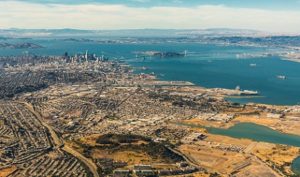 California Bay Area’s over one hundred cities range from north of San Francisco to south beyond San Jose and east well distant from salt water. Depending on who is defining (and therefore counting), it is home to between 6.5 and nearly 10 million persons. Many of those cities have agreements to provide mutual assistance in times of need, understanding that while all may suffer somewhat during a catastrophe, some will suffer more than others. Those authorities are not unique in this regard either within the United States or beyond, combining as they do private as well as government partners in their readying for future catastrophes. Ground roots inter-megacity relationships have much to offer in the way of best practice exchanges and helping each other close capability gaps. New York’s inter-organizational ties within the megacity and beyond complement intelligence competencies to similarly guarantee it a premier position when it comes to providing vital information. One wonders how the tragic mishandling of Mumbai’s 2008 terrorist attack might have gone differently had that city’s police learned from better prepared law enforcement organizations.
California Bay Area’s over one hundred cities range from north of San Francisco to south beyond San Jose and east well distant from salt water. Depending on who is defining (and therefore counting), it is home to between 6.5 and nearly 10 million persons. Many of those cities have agreements to provide mutual assistance in times of need, understanding that while all may suffer somewhat during a catastrophe, some will suffer more than others. Those authorities are not unique in this regard either within the United States or beyond, combining as they do private as well as government partners in their readying for future catastrophes. Ground roots inter-megacity relationships have much to offer in the way of best practice exchanges and helping each other close capability gaps. New York’s inter-organizational ties within the megacity and beyond complement intelligence competencies to similarly guarantee it a premier position when it comes to providing vital information. One wonders how the tragic mishandling of Mumbai’s 2008 terrorist attack might have gone differently had that city’s police learned from better prepared law enforcement organizations.
Whether consciously or otherwise, readiness for the next disaster is a part of Tokyo residents’ daily lives. The playing of the children’s tune Yuyake Koyake in the city’s Minato ward welcomes the pending evening. It also acts as a daily test of the community warning system. Streets designated for use by post-disaster emergency responders do double duty as firebreaks. Buildings must meet stringent design standards, a precautionary measure to avoid a repeat of  the havoc wrought by tremors and fire in 1923. Phone apps for instructing Japanese residents have company in invitations to international residents to attend emergency response training similar to that offered Japanese speakers so that all know what actions to take for self-preservation and rescue of neighbors. The importance of the latter cannot be overstated. “After the huge earthquake that struck modern, supposedly quake-proof Kobe in 1995,” wrote one author, “about four in five people requiring rescue were helped by other members of the public rather than the city’s official disaster responders.”12 The ubiquity of one’s neighbors rather than failure on the part of those responders goes far toward explaining the statistic.
the havoc wrought by tremors and fire in 1923. Phone apps for instructing Japanese residents have company in invitations to international residents to attend emergency response training similar to that offered Japanese speakers so that all know what actions to take for self-preservation and rescue of neighbors. The importance of the latter cannot be overstated. “After the huge earthquake that struck modern, supposedly quake-proof Kobe in 1995,” wrote one author, “about four in five people requiring rescue were helped by other members of the public rather than the city’s official disaster responders.”12 The ubiquity of one’s neighbors rather than failure on the part of those responders goes far toward explaining the statistic.
The Future of Megacities
Megacity complexity fortunately comes with benefits in addition to these challenges. Variety complements megacities’ large populations and other exceptional characteristics to give them a robustness smaller urban areas lack. New York, Tokyo, and London weathered the recession of this century’s first decade without undue long-term consequences. Narrower urban  economies’ populations have less opportunity to shift laterally when one or more sectors falter, Detroit and other U.S. midwestern cities being prime examples. Those responsible for or aiding megacity authorities in times of disaster will find themselves dealing with unique beasts of a complexity and richness nowhere else replicated. That disasters will touch these largest and most influential of urban areas is a given. Their importance to humankind means addressing their vulnerability to crisis is likewise.
economies’ populations have less opportunity to shift laterally when one or more sectors falter, Detroit and other U.S. midwestern cities being prime examples. Those responsible for or aiding megacity authorities in times of disaster will find themselves dealing with unique beasts of a complexity and richness nowhere else replicated. That disasters will touch these largest and most influential of urban areas is a given. Their importance to humankind means addressing their vulnerability to crisis is likewise.
If you enjoyed this post, please see Dr. Russell Glenn‘s original paper from which today’s post was excerpted here…
… then check out the following related content:
TRADOC Pamphlet 525-92-1, The Changing Character of Warfare: The Urban Operational Environment, April 2020.
Current and Future Operations in Megacities Conference: Observations and Recommendations, facilitated in Tokyo on 16-19 July 2019 — also review this conference’s complete Proceedings, as well as select speakers’ slide decks, presenter biographies, and conference agenda.
Megacities: Future Challenges and Responses, documenting key insights from the Multi Domain Battle (MDB) In Megacities Conference, facilitated at Fort Hamilton, New York, on 3-4 April 2018, as well as the agenda, presenter biographies, slide decks, associated videos of presentations, and conference Proceedings.
War in Ukraine: The Urban Fight is Happening Now and associated podcast, and Ukraine: All Roads Lead to Urban and associated podcast, with MAJ John Spencer (USA-Ret.)
Throwback Thursday: A Chinese Perspective on Future Urban Unmanned Operations
Dense Urban Environments (DUE): Now through 2050
Dense Urban Hackathon – Virtual Innovation
2nd Dense Urban Armored Brigade (DUAB) Personnel Evaluations, by Ed dos Santos, Jr.
Fifth Generation Combat: SubTerranean Ops in Singapore, by the Radio Research Group
Military Implications of Smart Cities, by Alexander Braszko, Jr.
Integrated Sensors: The Critical Element in Future Complex Environment Warfare, by Dr. Richard Nabors
Classic Planning Holism as a Basis for Megacity Strategy and Three Futurist Urban Scenarios, both by Dr. Nir Buras
>>>>REMINDER: AFGFR Vignette Writing Contest — Our Sister Service partners in the U.S. Air Force (USAF) are proud to present the Air Force Global Futures Report: Joint Functions in 2040, published by Headquarters Air Force A5/7 (aka Air Force Futures). This report is the USAF’s analogue to the U.S. Army Futures Command’s AFC Pamphlet 525-2, Future Operational Environment: Forging the Future in an Uncertain World 2035-2050.
The AFGFR highlights four future operating environments and major implications for the future force. To bring these operating environments to life, Army Mad Scientist is partnering with the Air Force Futures’ Foresight Team to conduct the AFGFR Vignette Writing Contest — based on the report’s four futures and the exploration of the Joint Functions. We are seeking vignettes with characters that make the future operating environments and associated 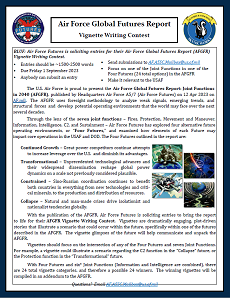 Joint Functions within come to life!
Joint Functions within come to life!
The AFGFR Vignette Writing Contest is open to all — anyone can submit an entry. Entries should be between 1500-2500 words in length, and are due NLT 01 September 2023. To learn more about the contest and how to submit your entry(ies), click >>>> here <<<< and read the contest flyer!
About the Author: Dr. Russell W. Glenn spent over twenty-five years serving with the U.S. Army and sixteen in the think tank community thereafter. He subsequently enjoyed a trio of years on the faculty of the Australian National University’s Strategic and Defence Studies Centre. He is author-editor of over fifty books or book-length studies, to include Trust and Leadership: The Australian Army Approach to Mission Command (University of North Georgia Press, 2020) and Come Hell or High Fever: Readying the World’s Megacities for Disaster, available for purchase in paperback or freely downloadable here. Released in April 2023, his first novel (Gods’ War) pits a Union Robert E. Lee against Stonewall Jackson and is available from Amazon and other booksellers
Disclaimer: The views expressed in this blog post do not necessarily reflect those of the U.S. Department of Defense, Department of the Army, Army Futures Command (AFC), or Training and Doctrine Command (TRADOC).
1 Jo da Silva, Sam Kernaghan, and Andrés Luque, “A systems approach to meeting the challenges of urban climate change,” Journal of Urban Sustainable Development 4 (November 2012): 125; and United Nations, “Goal 11: Make cities inclusive, safe, resilient and sustainable,” United Nations Sustainable Development Goals, https://www.un.org/sustainabledevelopment/cities/ (accessed January 5, 2019).
2 For urban areas qualifying as megacities, see “Demographia World Urban Areas,” 18th annual edition, July 2022, http://www.demographia.com/db-worldua.pdf (accessed January 10, 2023), 21.
3 United Nations Human Settlements Program, “World Cities Report 2016: Urbanization and Development-Emerging Futures,” UN Habitat, 31, https://unhabitat.org/sites/default/files/download-manager-files/WCR-2016-WEB.pdf (accessed January 10, 2023).
4 Maria Saifuddin Effendi, “Karachi: The Backbone of Pakistan,” The Nation (September 2020), https://nation.com.pk/01-Sep-2020/karachi-the-backbone-of-pakistan?version=amp (accessed March 15, 2021); and Laurent Gayer, Karachi: Ordered Disorder and the Struggle for the City, Noida, India: HarperCollins, 2014, 5.
5 “Demographia World Urban Areas,” July 2022, 21.
6 Richard Florida, “The Economic Power of Cities Compared to Nations,” Citylab, March 16, 2017, https://www.citylab.com/life/2017/03/the-economic-power-of-global-cities-compared-to-nations/519294/ (accessed May 6, 2018); “Which are the largest city economies in the world and how might this change by 2015?” PricewaterhouseCoopers UK Economic Outlook, November 2019, http://pwc.blogs.com/files/global-city-gdp-rankings-2008-2025.pdf (accessed May 19, 2018), 22 and 23; Schumpeter, “Global Cities Revisited: Where businesses locate now—and where they will go,” The Economist (October 3, 2013), https://www.economist.com/blogs/schumpeter/2013/10/geography-business (accessed September 12, 2017); and Tokyo Metropolitan Government, “About Our City,” http://www.metro.Tokyo.jp/English/about/appendix/appendix02.htm (accessed February 9, 2019).
7 Andrew Gilligan, “Fukushima: Tokyo was on the brink of nuclear catastrophe, admits former prime minister,” The Telegraph (March 4, 2016), https://www.telegraph.co.uk/news/worldnews/asia/japan/12184114/Fukushima-Tokyo-was-on-the-brink-of-nuclear-catastrophe-admits-former-prime-minister.html (accessed April 14, 2019).
8 Wan Yang, “Estimating the infection-fatality risk of SARS-CoV-2 in New York City during the spring 2020 pandemic wave: a model-based analysis,” The Lancet 21 (February 2021): 203, https://www.thelancet.com/journals/laninf/article/PIIS1473-3099(20)30769-6/fulltext (accessed March 12, 2021); and “COVID-19 Data: Total Data,” NYC Health, March 11, 2021, https://www1.nyc.gov/site/doh/covid/covid-19-data-totals.page (accessed March 12, 2021).
9 Joseph Goldstein, “1.5 Million Antibody Tests Show What Parts of N.Y.C. Were Hit Hardest,” The New York Times (August 20, 2020), https://www.nytimes.com/2020/08/19/nyregion/new-york-city-antibody-test.html (accessed August 26, 2020).
10 Amy Jamieson, “How New York City Got Control of COVID-19 – and Where It Goes from Here,” Health News (July 20, 2020), https://www.healthline.com/health-news/how-new-york-city-got-control-of-covid19 (accessed August 26, 2020).
11 Amanda Rose, “What N.Y.C.’s Antibody Test Results Show Us,” The New York Times (August 20, 2020), https://www.nytimes.com/2020/08/20/nyregion/nyc-coronavirus-antibody-testing.html (accessed August 26, 2020).
12 Daniel Hurst, “This is not a ‘what if’ story: Tokyo braces for the earthquake of a century,” The Guardian, (June 11, 2019), https://www.theguardian.com/cities/2019/jun/12/this-is-not-a-what-if-story-tokyo-braces-for-the-earthquake-of-a-century (accessed July 4, 2019).

